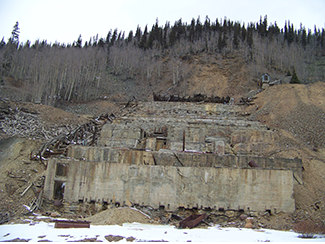Shedding light on the spill
August 18, 2015 - Tamara Williams
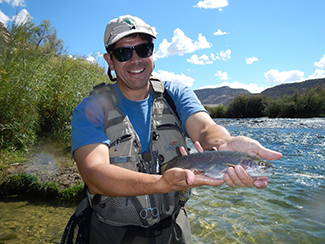
Cliff Villa on the San Juan River last September
Professor Cliff Villa is the “go to guy” on legal and practical implications of the Animas River spill.
Recently hired to teach environmental law at the University of New Mexico School of Law, he served more than two decades with the U.S. Environmental Protection Agency.
“I’ve noted much confusion among the public and media concerning the legal and practical implications of this terrible incident,” says Villa.
To help shed some light on these issues and answer some questions he has seen raised, he shared his expertise with the news media and wrote an op-ed that was published in the Albuquerque Journal.
“Cliff has quickly established himself as the ‘go-to’ guy on the Animas spill,” says Mary Pareja, an assistant professor at the law school. “It’s great that the UNM Law School can serve the public by providing that level of expertise.”
A few of the recent news stories
Villa has been interviewed by TV stations KRQE, KOAT, CBS, and others. Here’s a partial list of recent news stories:
- Entravision New Mexico
- http://www.koat.com/news/ponds-slow-down-water-at-spill-site/34683186
- http://www.koat.com/news/nm-gov-to-declare-state-of-emergency-over-animas-river-spill/34639546
- http://www.koat.com/news/nm-gov-to-declare-state-of-emergency-over-animas-river-spill/34639546 (5th video on the page)
- KUNM Call-In Show (Aug 20)
- KSFR Santa Fe Public Radio (Aug 20)
Villa’s op-ed
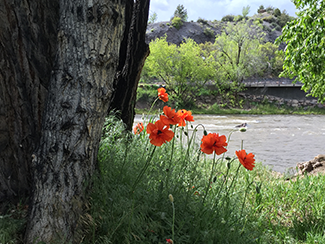
Before the spill.
Photo credit: Rachel Toon
Like many New Mexicans, my family and I have been made heartsick by the horrendous spill of mine waste into the Animas River. Like many people, we feel deep connections to the places that have now been polluted.
These are places where we learned to swim and fish and enjoy nature. These are also the places that inspired my dedication to protect the environment, serving more than two decades with the U.S. Environmental Protection Agency and now teaching as a professor of environmental law at the University of New Mexico School of Law.
With this perspective, I have noted much confusion concerning the legal and practical implications of this terrible incident. To help shed some light on these issues and answer some questions I have seen raised, I would like to share the following comments.
What are the real impacts of this spill to people or the environment?
EPA toxicologists, working together with scientists from many other federal, state and tribal agencies are working to answer that question. At this point, concentrations of acid mine water and metals in the Animas River appear to be falling and presenting little risk to fish and to people who would swim, paddle and otherwise recreate on the river. However, the risk to people through drinking water still must be evaluated, as well as the risks to livestock and crops irrigated with river water. Long-term risks to the environment, will likely require more extensive evaluation.
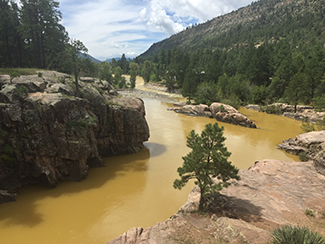
After the spill on August 8, 2015.
Photo credit: Rachel Toon
Can EPA be held responsible for causing this spill?
One bedrock principle in the United States is that no person or agency is above the law. However, the liability of federal agencies, as well as state and tribal governments, may be limited by an ancient rule of common law known as “sovereign immunity.” Under this rule, as established by Supreme Court precedent, the federal government cannot be sued without its express consent.
Federal Superfund law waives sovereign immunity, and many federal agencies have been subject to suits under Superfund. However, it remains unclear what such a lawsuit would seek to achieve.
For example, should an affected tribe have concerns about the pace of EPA’s cleanup efforts, the tribe can raise their concerns directly to EPA through a process known as “unified command.” Costs for the participation of local, state and tribal governments in unified command may be reimbursed by EPA directly without the need for lawsuits.
Animas River on August 8, 2015.
Credit: Rachel Toon
Click video to open.
EPA has also established a claims procedure for any individual to seek reimbursement for losses caused by this incident.
Where is the money coming from to respond to this incident?
Most is likely to come from the federal Superfund trust fund. The trust fund provides EPA with money to conduct emergency responses, such as this one, and remediation.
What would it mean for the Animas River watershed to be declared a “Superfund site”?
Superfund designation is essential for funding long-term cleanup beyond the emergency response phase. One common misconception is that designation as a Superfund site would mean parties could suddenly become liable for the cost of cleanup. In truth, Superfund liability and Superfund designation are entirely separate. Superfund designation will not make any parties more liable for the cleanup than they are already today.
What is the role of FEMA in this incident? Should the president declare a disaster?
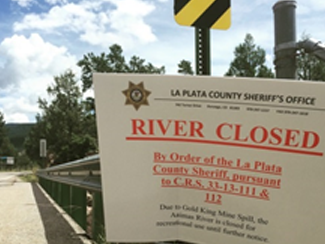
Sign of the river closing on August 8, 2015
Photo credit: Rachel Toon
The federal Stafford Act allows the president to designate a “major disaster” that would allow access to funds managed by FEMA. However, no disaster declaration is necessary or appropriate where, as here, other sources of funding are already available.
Does this incident indicate a need for change in federal law?
Not necessarily. The federal Superfund law in its current form has been used successfully to address many large mine sites and mining districts.
One occasional criticism of current law concerns the alleged need for a “Good Samaritan” amendment that would allow private parties to conduct mine cleanups voluntarily. However, current law already allows interested parties to enter agreements with state and federal agencies to conduct voluntary cleanups.
Views expressed in this article are entirely the author’s.


